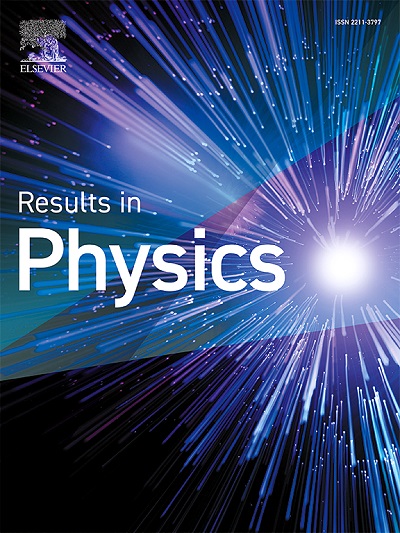A random fiber laser with multiple bidirectional Rayleigh scattering provided by dual-ring sub-cavity structure
IF 4.4
2区 物理与天体物理
Q2 MATERIALS SCIENCE, MULTIDISCIPLINARY
引用次数: 0
Abstract
In this study, a simple and effective method for enhancing Rayleigh scattering (RS) intensity is proposed and experimentally validated, enabling stable output with exceptionally low-frequency noise across each wavelength channel of random fiber lasers (RFLs). The design employs two segments of single-mode fibers (SMFs) symmetrically arranged in dual-ring sub-cavity. This unique structural configuration facilitates multiple bidirectional RS interactions, providing sufficient random distributed feedback (R-DFB) for the laser system. Initially, random laser (RL) outputs at 1560 nm were achieved using both ring-cavity and single-ring sub-cavity structures. These systems exhibited frequency noise exceeding 1.21 Hz/√Hz and wavelength and output power fluctuations of 0.79 nm and 1.52 dB, respectively. Subsequently, the laser system was upgraded to a dual-ring sub-cavity configuration, and its output performance was re-evaluated. The experimental results show that the wavelength and output power fluctuations are reduced to 0.28 nm and 0.26 dB, respectively. Benefiting from the enhanced R-DFB and superior filtering properties of the dual-ring sub-cavity, the frequency noise of the lasing output decreased significantly to 0.03 Hz/√Hz, the lowest value reported to date. In addition, the importance of sufficient R-DFB for RFL is demonstrated by measuring frequency amplitude, output linewidth, and slope efficiency.
求助全文
约1分钟内获得全文
求助全文
来源期刊

Results in Physics
MATERIALS SCIENCE, MULTIDISCIPLINARYPHYSIC-PHYSICS, MULTIDISCIPLINARY
CiteScore
8.70
自引率
9.40%
发文量
754
审稿时长
50 days
期刊介绍:
Results in Physics is an open access journal offering authors the opportunity to publish in all fundamental and interdisciplinary areas of physics, materials science, and applied physics. Papers of a theoretical, computational, and experimental nature are all welcome. Results in Physics accepts papers that are scientifically sound, technically correct and provide valuable new knowledge to the physics community. Topics such as three-dimensional flow and magnetohydrodynamics are not within the scope of Results in Physics.
Results in Physics welcomes three types of papers:
1. Full research papers
2. Microarticles: very short papers, no longer than two pages. They may consist of a single, but well-described piece of information, such as:
- Data and/or a plot plus a description
- Description of a new method or instrumentation
- Negative results
- Concept or design study
3. Letters to the Editor: Letters discussing a recent article published in Results in Physics are welcome. These are objective, constructive, or educational critiques of papers published in Results in Physics. Accepted letters will be sent to the author of the original paper for a response. Each letter and response is published together. Letters should be received within 8 weeks of the article''s publication. They should not exceed 750 words of text and 10 references.
 求助内容:
求助内容: 应助结果提醒方式:
应助结果提醒方式:


